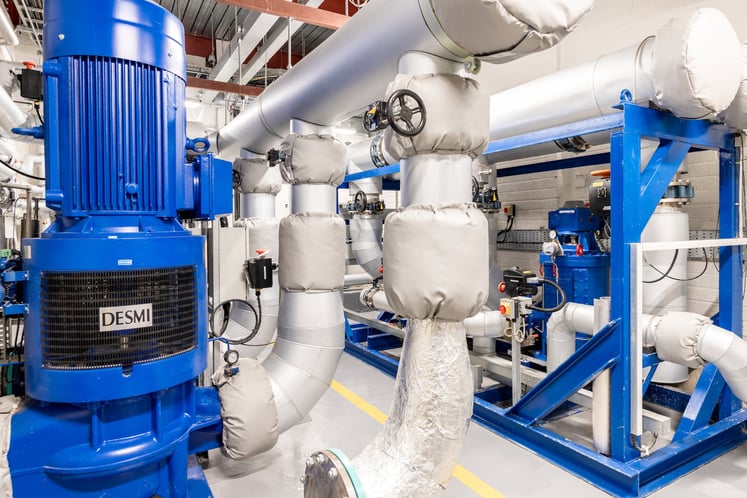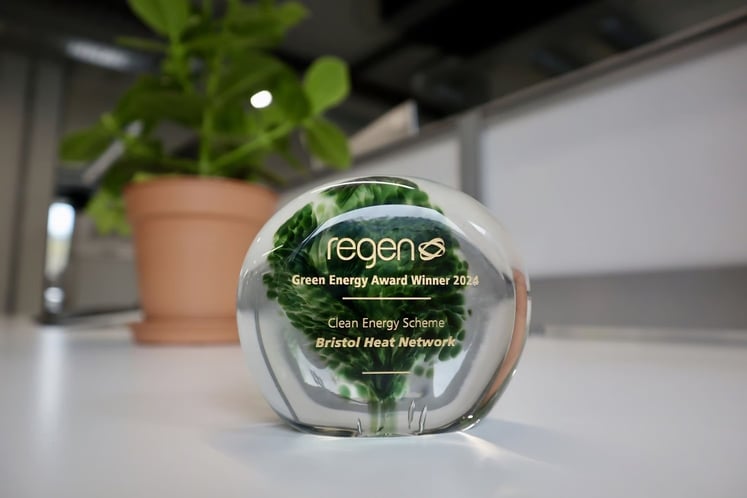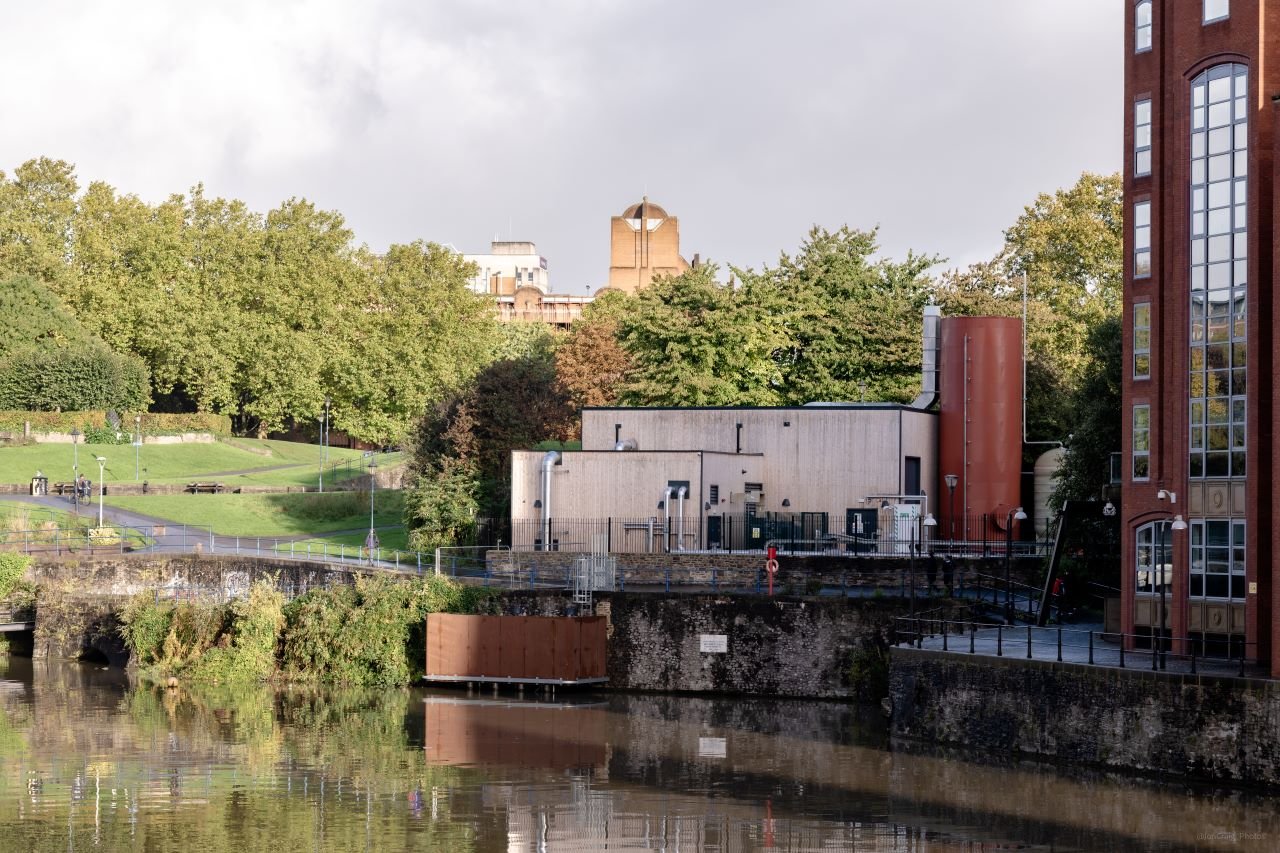Selene Molina Blanco, Head of Engineering in our Bristol office, explains the role of water-source heat pumps in Bristol’s heat network and how the technology works to bring low carbon heating and hot water to people living and working in the city.
This article was originally published in Construction Management Magazine. on 13th May 2024. The content below has since been updated. The original article can be viewed here.
We can’t reach net zero without the large-scale deployment of heat networks, and water source heat pumps (WSHP) are one of the sources of heat that heat networks can tap into.
What are heat networks and what is their role in enabling the UK to reach net zero?
Heat networks are city-scale heating systems. Powered by a range of sources, they use a network of underground pipes to transport heat (via hot water) from a central source to houses and buildings of all types. Heat networks can be generation agnostic, meaning they can adapt easily to different sources of heat, capturing and using it to heat local homes and businesses.
For the UK to reach its legally binding net zero by 2050 target, heat networks need to grow from supplying 3% of the UK’s heating to 20%. This means rapid, at scale growth of this tried and tested technology, which has been heating homes in Europe for more than 100 years. In Sweden, for example, half of all heating is already provided by heat networks. In Uppsala, Vattenfall has been operating a heat network utilising heat from an energy from waste facility and from a sewage treatment works heat pump since 1973.
Where does the heat to supply heat networks come from?
Much of the heat generated in towns and cities is wasted.
Wasted heat in the EU amounts to almost exactly the EU’s total energy demand for heat and hot water in residential and service sector buildings.
Whether the heat comes from air or water source heat pumps, sewage plants, data centres or waste management facilities, it can all be used for heat networks to create warm homes and businesses and build energy resilience in areas where industrial and residential areas exist in proximity.
Let’s focus on heat pumps – how do they work?
A heat pump uses the same technology as a refrigerator or an air conditioner. It extracts heat from a source, such as the surrounding air, geothermal energy stored in the ground, or nearby sources of water or waste heat from a factory. It then upgrades and transfers the heat to where it is needed. Because most of the heat is transferred rather than generated, heat pumps are far more efficient than conventional heating technologies, such as boilers or electric heaters. The output of energy in the form of heat is normally several times greater than that required to power the heat pump, normally in the form of electricity. For example, the coefficient of performance (COP) for a typical household heat pump is around three. This means that the energy output is four times greater than the electrical energy used to run it. This makes current models 3‐5 times more energy efficient than gas boilers.
The heat pump itself consists of a heat exchanger that uses heat from the source, such as air, water or the ground, to evaporate a refrigerant fluid. More energy is added to the fluid by compressing it (this uses electricity). This high energy refrigerant gas then goes through another heat exchanger called the condenser and releases its energy to the heat network and heats it up. The refrigerant then condenses and loses all its energy by going through an expansion valve. This low energy liquid refrigerant gets energy through the evaporator, starting the cycle again.
In buildings, the heat is delivered using radiators or under‐floor heating. Hot water is provided instantaneously through a heat exchanger connected to the heat network. In industry, heat pumps are used to deliver hot air, water or steam, or to directly heat materials. Large‐scale heat pumps in commercial or industrial applications or in district heating networks require higher input temperatures than in residential applications, which can be sourced from the waste heat of industrial processes, data centres or wastewater.
Can you tell us more about Vattenfall’s water source heat pump in Bristol?
Vattenfall is working to deliver the Bristol Heat Network across Bristol, as part of Bristol City Leap, a partnership between Bristol City Council and Ameresco.
As part of the Bristol Heat Network, Vattenfall is operating the UK’s largest single harbour-based water source heat pump at Castle Park Energy Centre, to turn latent heat into energy for people living and working in the city.
Water is taken from the nearby floating harbour and is filtered to prevent debris from entering the system. It is passed through the 3 megawatt water source heat pump, where the latent heat transfers energy to ammonia and creates low pressure vapour, which can be compressed to a high-pressure vapour of around 110°C.
Heat from the water source heat pump is directed into a thermal store that then feeds into the Bristol Heat Network as and when needed.
How can you connect your business or property up to a heat network?
We are working to develop heat networks in London, Midlothian on the outskirts of Edinburgh and Bristol and actively seeking property developers and owners to connect. If you are looking to learn more, we can set up an early engagement meeting with our team, who will explain the process, with the next step to complete a connection form with information about your building (where is it, usage type, heat needs, etc). We will use that to assess the heat capacity you require and make a connection offer.
Once we reach this stage, we will then work with your team to make sure the building systems are compatible with our network and sign a connection agreement. Our engineering and delivery teams then install a branch and a heat substation (heat exchangers and valves) into your building, coordinating with your local team to minimise disruption.
Finally, we test the system to make sure it works as agreed and you can start using low carbon heat and hot water from our network.

Related pages

Benefits of heat networks
Heat networks present a forward-thinking solution for urban development. Recognised for their efficiency and sustainability, heat networks offer many benefits for developers, building owners, and operators.

Bristol heat network scoops up two prestigious industry awards
Vattenfall’s Bristol Heat Network picked up two awards on the same night, recognised for its achievements in areas such as emissions savings, city-wide delivery, and social value and community engagement.

Who we help
Working in partnership with local authorities, real estate developers and housing associations, we deliver reliable, low carbon heating to local communities across the UK.




